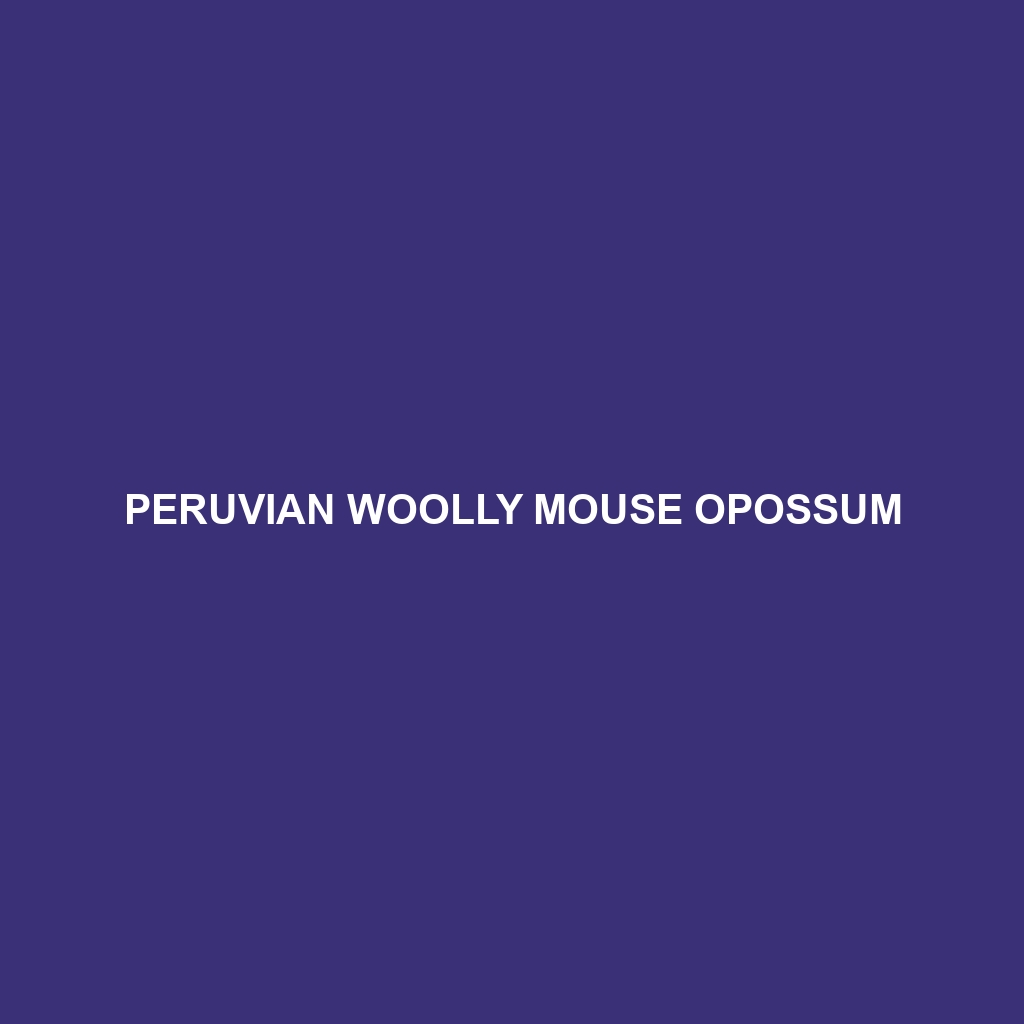Peruvian Woolly Mouse Opossum: A Detailed Description
The Peruvian Woolly Mouse Opossum (Micoureus regina) is a small, nocturnal marsupial native to South America. Known for its soft, woolly fur and agile movements, this diminutive creature inhabits the lush rainforests of Peru. Despite its unassuming size, the Peruvian Woolly Mouse Opossum plays a vital role in the ecosystem, contributing to seed dispersal and insect control.
Physical Characteristics
Size:
Body Length: Approximately 10-15 centimeters (4-6 inches).
Tail Length: Roughly equal to or slightly longer than the body, aiding in balance and climbing.
Coloration:
Fur: Characterized by dense, woolly fur which varies in color from gray-brown to reddish-brown on the back, and lighter, often creamy white or pale gray on the underbelly.
Markings: Typically, these opossums have a darker stripe along the midline of the back and lighter patches around the eyes, giving them a masked appearance.
Special Features:
Tail: Prehensile, meaning it can grasp and hold objects, aiding in climbing and maneuvering through the trees.
Ears: Large and rounded, providing excellent hearing to detect predators and prey.
Eyes: Prominent and adapted for nocturnal vision.
Behavior
Social Interactions:
Generally solitary except during mating seasons.
Communicates through a series of vocalizations and scent markings.
Feeding Habits:
Diet: Omnivorous, feeding on a variety of insects, small vertebrates, fruits, and nectar.
Foraging: Primarily nocturnal foragers, using their keen sense of smell and hearing to locate food.
Ecological Roles:
Seed Dispersal: By consuming fruits, they help in the dispersal of seeds, contributing to forest regeneration.
Pest Control: Their insectivorous diet helps control insect populations.
Habitat and Adaptations
Habitats:
Found in tropical rainforests, particularly in dense, moist areas with abundant vegetation.
Prefers elevated habitats such as tree canopies and understory vegetation, rarely descending to the forest floor.
Adaptations:
Climbing: Adapted for an arboreal lifestyle with sharp claws, a prehensile tail, and strong, flexible limbs.
Camouflage: Their fur coloration provides effective camouflage against the forest backdrop.
Nocturnal Lifestyle: Large eyes and sensitive ears optimized for night-time activity.
Conservation Status
Current Status: Classified as ‘Least Concern’ by the IUCN Red List.
Threats: Habitat destruction due to deforestation and agricultural expansion.
Conservation Efforts: Preserving rainforest habitats through national parks and reserves, and promoting sustainable land-use practices.
Fascinating Fun Facts
The Peruvian Woolly Mouse Opossum is an excellent jumper, able to leap from branch to branch with ease.
Unlike many mammals, they have a highly developed sense of smell which is crucial for finding food and navigating their environment.
Female Peruvian Woolly Mouse Opossums carry their young in a pouch, where the infants continue to develop post-birth, a characteristic trait of marsupials.
The Peruvian Woolly Mouse Opossum is a remarkable example of nature’s adaptability and resilience, embodying the intricate balance of life within the South American rainforests.
